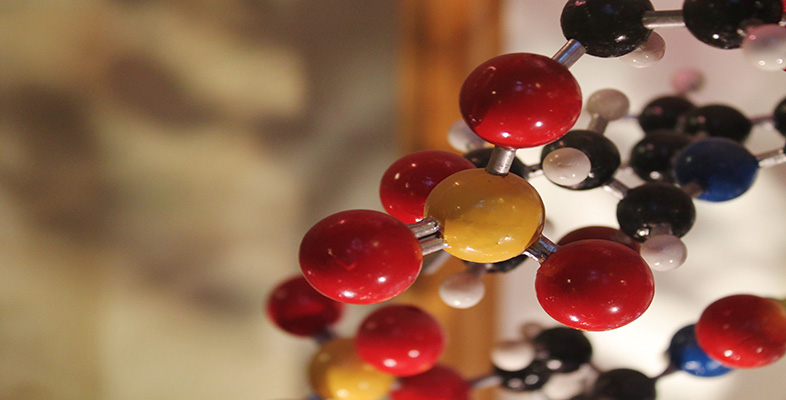1.5 Is homeopathy science?

Consider the numbers in homeopathy, a medical system that was devised by a German physician in 1796. Homeopathy was based on two ideas: firstly, that a substance that causes certain symptoms can also be used to cure those same symptoms, in other words ‘like cures like’, and secondly, that diluting a substance to minuscule levels increases its effectiveness. In the late eighteenth century, mainstream medical practice was much less effective than it is today; indeed, it was highly dangerous, with treatments often making patients worse. As such, it is easy to see why a non-invasive system like homeopathy gained popularity.
Let’s explore the methods by which homeopathic preparations are made, by examining a homeopathic preparation marketed for the treatment of flu-like symptoms. It has the rather long name of oscillococcinum and the basic preparation principles hold true for all homeopathic preparations.
Oscillococcinum was introduced after the influenza epidemic of 1918. A French physician thought he saw a type of oscillating bacteria in the blood of flu patients and, thinking it might be causing the flu, tried to find it in other animals. Eventually he thought he had found it in some diseased duck liver. Taking a sample from the liver, he diluted it in either pure water or alcohol to 1 part in 100. Then he took 1 part of that diluted mix and again diluted it to 1 part in 100. He repeated this process a total of two hundred times and marketed the end product as a treatment for influenza.
By the final stage, the duck liver is extremely diluted, but by how much? If we take the first dilution then we have a ratio of 1 part in 100. If we look at the second stage in the dilution process, when this dilute mixture has itself been diluted to 1 part in 100, we have a new ratio of duck liver to water of 1 part in 10,000, or one hundred times one hundred. A third step would make a dilution of 1 part in a 1,000,000, or one hundred times one hundred times one hundred.
By the time it has been diluted 200 times in this way it has a ratio of (deep breath!) one part in a hundred times a hundred times a hundred times a hundred times a hundred times a hundred times a hundred times a hundred times a hundred times a hundred times a hundred times a hundred times a hundred times a hundred times a hundred times a hundred times a hundred times a hundred times a hundred times a hundred times a hundred times a hundred times a hundred times a hundred times a hundred times a hundred times a hundred times a hundred times a hundred times a hundred times a hundred times a hundred times a hundred times a hundred times a hundred times a hundred times a hundred times a hundred times a hundred times a hundred times a hundred times a hundred times a hundred times a hundred times a hundred times a hundred times a hundred times a hundred times a hundred times a hundred times a hundred times a hundred times a hundred times a hundred times a hundred times a hundred times a hundred times a hundred times a hundred times a hundred times a hundred times a hundred times a hundred times a hundred times a hundred times a hundred times a hundred times a hundred times a hundred times a hundred times a hundred times a hundred times a hundred times a hundred times a hundred times a hundred times a hundred times a hundred times a hundred times a hundred times a hundred times a hundred times a hundred times a hundred times a hundred times a hundred times a hundred times a hundred times a hundred times a hundred times a hundred times a hundred times a hundred times a hundred times a hundred times a hundred times a hundred times a hundred times a hundred times a hundred times a hundred times a hundred times a hundred times a hundred times a hundred times a hundred times a hundred times a hundred times a hundred times a hundred times a hundred times a hundred times a hundred times a hundred times a hundred times a hundred times a hundred times a hundred times a hundred times a hundred times a hundred times a hundred times a hundred times a hundred times a hundred times a hundred times a hundred times a hundred times a hundred times a hundred times a hundred times a hundred times a hundred times a hundred times a hundred times a hundred times a hundred times a hundred times a hundred times a hundred times a hundred times a hundred times a hundred times a hundred times a hundred times a hundred times a hundred times a hundred times a hundred times a hundred times a hundred times a hundred times a hundred times a hundred times a hundred times a hundred times a hundred times a hundred times a hundred times a hundred times a hundred times a hundred times a hundred times a hundred times a hundred times a hundred times a hundred times a hundred times a hundred times a hundred times a hundred times a hundred times a hundred times a hundred times a hundred times a hundred times a hundred times a hundred times a hundred times a hundred times a hundred times a hundred times a hundred times a hundred times a hundred times a hundred times a hundred times a hundred times a hundred times a hundred times a hundred times a hundred times a hundred times a hundred times a hundred times a hundred times a hundred times a hundred times a hundred times a hundred!
Or written another way, this is 1 in 10,000,000,000,000,000,000,000, 000,000,000,000,000,000,000,000, 000,000,000,000,000,000,000,000, 000,000,000,000,000,000,000,000, 000,000,000,000,000,000,000,000, 000,000,000,000,000,000,000,000, 000,000,000,000,000,000,000,000, 000,000,000,000,000,000,000,000, 000,000,000,000,000,000,000,000, 000,000,000,000,000,000,000,000, 000,000,000,000,000,000,000,000, 000,000,000,000,000,000,000,000, 000,000,000,000,000,000,000,000, 000,000,000,000,000,000,000,000, 000,000,000,000,000,000,000,000, 000,000,000,000,000,000,000,000, 000,000,000,000,000,000.
That is a 1 followed by 400 zeroes, which is a very large number and it’s a bit absurd to have to write it down like this, but don’t worry, you will be learning about scientific notation very soon. For now, let’s consider what a dilution like this is equivalent to.
Is it, for example, like putting one drop into a swimming pool? Well, no. At just six dilution steps, or one drop in a hundred times a hundred times a hundred times a hundred times a hundred times a hundred (or 1 in 1,000,000,000,000), you have already reached a dilution of one drop in eight Olympic-sized swimming pools. After 13 steps (or 1 in 100,000,000,000,000,000,000,000,000) of the process, the dilution is the equivalent of one drop in all the Earth’s oceans. After 16 steps, it is roughly the same as one drop in a sphere of water the size of the Earth. After 26 steps, the dilution is roughly the same as a sphere of water with the same diameter as the Milky Way galaxy.
So what of the oscillococcinum remedy? At 200 dilution steps (or a 1 followed by 400 zeroes) it means that it is diluted far, far beyond the more typical homeopathic preparations. Estimates of the number of atoms in the observable universe are about 100,000,000,000,000,000,000,000, 000,000,000,000,000,000,000,000, 000,000,000,000,000,000,000,000, 000,000,000, or a 1 followed by 80 zeroes, making the odds of getting a single particle from the diseased duck liver roughly the same as the odds of finding one diseased duck liver particle in 10320 universes containing nothing but water.
At the time that homeopathy was first developed it relied on ideas that had not been scientifically tested. To believe it could work now would require an almost complete discarding of major fields of chemistry, biology and physics. And finally, what of the vibrating oscillococcus bacterium? We now know that influenza is a viral disease, not a bacterial one, and the oscillococcus bacterium was merely a figment of the French physician’s imagination; it doesn’t actually exist. Unfortunately, preventing and curing the rapidly mutating influenza virus is still challenging modern science.
